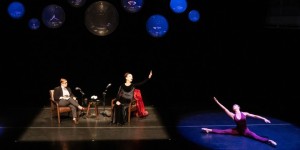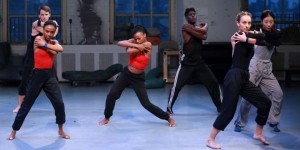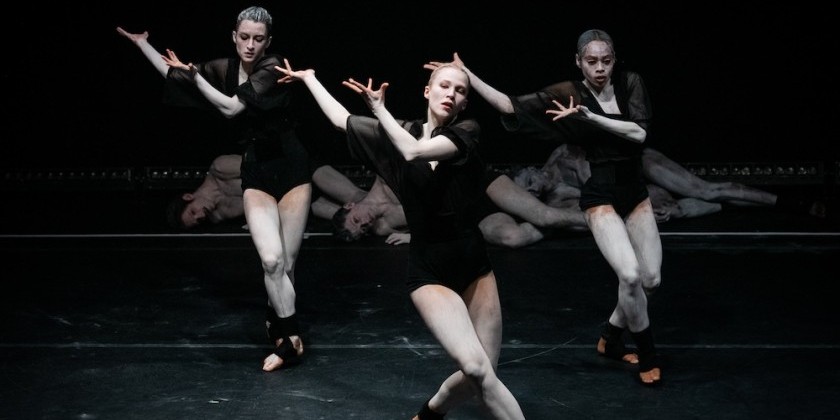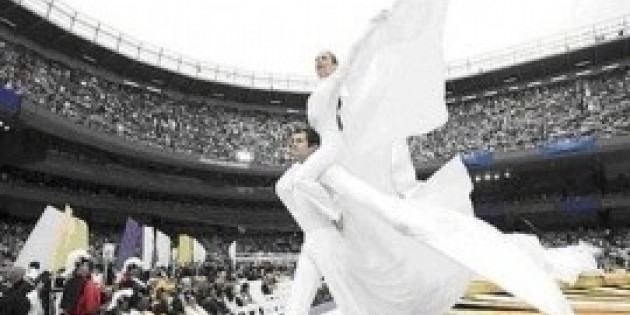Guest Writer Blakeley White-McGuire Stages Martha Graham's "Errand Into the Maze" at the Semperoper in Dresden, Germany
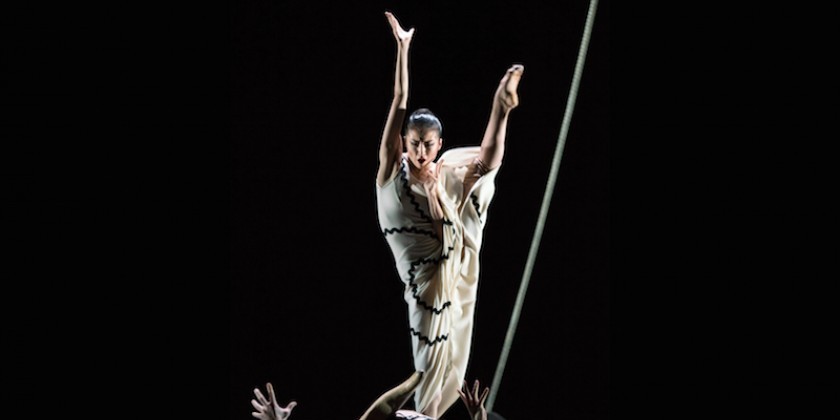
Semperoper dancers Duosi Zhu and Christian Bauch in Martha Graham’s Errand Into the Maze; Photo: Ian Whalen.
Hello. I am Blakeley White-McGuire, a dancer/teacher/maker and dance enthusiast/activist based in New York City. For over 25 years, I have performed within the canon of American modern dance (15 of those as principal dancer with the Martha Graham Dance Company). My life in dance continues to provide many extraordinary opportunities to engage in cultural exchanges as dancer and répétiteur. Recently, I traveled beyond my U.S. home culture to Dresden, Germany. There I directed the staging of one of Martha Graham’s famous archetypal ballets, Errand Into the Maze for its premiere at the Semperoper. The whole experience was a window to culture that revealed how its people express what they value, respect, and make efforts to conserve.
Dresden is a city located on the Elbe River in the German State of Saxony. Its culture is rich with tradition and the people have a particular warmth about them. As an English-only speaker, I relied on this warmth tremendously. Whenever I struggled to eke out a sentence in German such as “Ich bin ein guest”, people would eagerly return my smile and use it as an opportunity to practice their English. :) The city contains both grandeur and subtlety; Baroque and minimalist Lutheran aesthetics which its historic churches illuminate as spaces for contemplation. There are great museum collections of porcelain, portraiture, jewelry, and armor cultivated by kings and citizens alike. The Residenzschloss (Royal Porcelain Museum) is, in my experience, a unique collection. It holds a menagerie of porcelain animals captured in naturalistic poses such as a heron catching a fish in its mouth or a forest-dwelling monkey screaming in a tree. The most impressive piece was a delicate bouquet of flowers made entirely of porcelain. Exquisite!
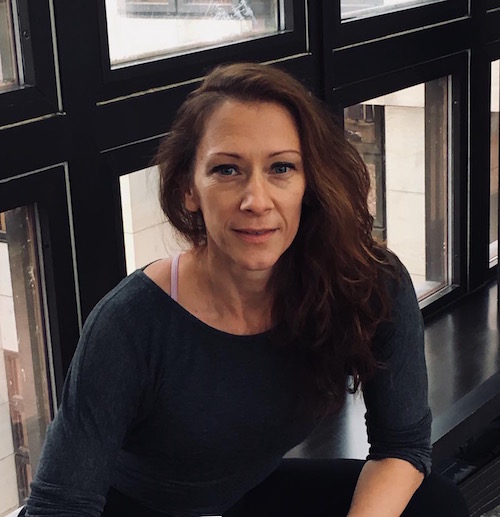
Dresden’s modern-day history is strongly felt when one walks its streets. The city and tens of thousands of citizens were decimated by allied bombing during the second World War and it was subsequently occupied under Soviet communism until the fall of the Berlin wall in 1989. This history is appropriately revealed by a feeling of disjointedness in the overall architecture. Whether it is the florid Zwinger Palace in relation to the stark communist block buildings, or the Saxon inspired mosaic demonstrating cultural identity in contrast to the mural of the people fighting for their personal political freedom; it is from Art that one understands Dresden’s cultural ethos. I read it as one of survival, continuation and a willingness to thrive. From within the rubble of war and occupation, residents and local government made choices about what should be rebuilt. Answers to those questions of how and why are representational statements on cultural values.
Visual, architectural and aural examples, such as the beauty of Semperoper’s orchestra (founded in 1548) and its innovative ballet programming, connect me with the idea that those choices people make on what to maintain, rebuild, and continue are signifiers of the culture itself.
I am here to work with six dancers from Semperoper Ballet on Errand Into the Maze (1947). With music by Gian Carlo Menotti and a minimal sculptural setting by Graham’s signature collaborator, Isamu Noguchi, the dance is a visceral expression of working through one’s innermost fears. Utilizing the Greek myth of Theseus and the Minotaur, Graham privileges the female purview of Ariadne (a historically minor character in this myth) to support her ballet’s abstractionist narrative. At the time of its creation this expression of the feminine by a woman was a bold public statement, and a significant one in the creation of the modern dance canon.
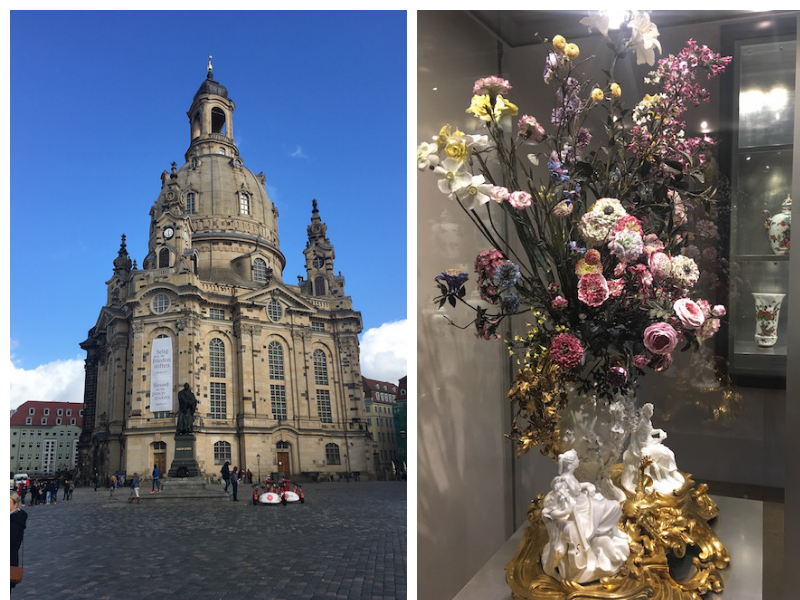
As an official register of the Martha Graham Center under Artistic Director Janet Eilber, it is my charge to rehearse the three casts, get the staging of the set and lighting right, and be sure that each element of the dance is presented with utmost integrity. Having performed this dance myself for many years and watched several great dancers fulfill the role, I feel a responsibility that is both deep and joyous.
Semperoper is presenting the duet as part of its program Labyrinth conceived by Artistic Director Aaron S. Watkin. The programing is brilliant! George Balanchine (Four Temperaments), Graham (Errand Into the Maze), Ohad Naharin (Black Milk) and up-and-coming Joseph Hernandez (Songs for a Siren). Bold programing indeed! A sense of renewal or an action towards rebirth is a common thread amongst all four works and very related to Dresden’s active cultural identity as I have described earlier.
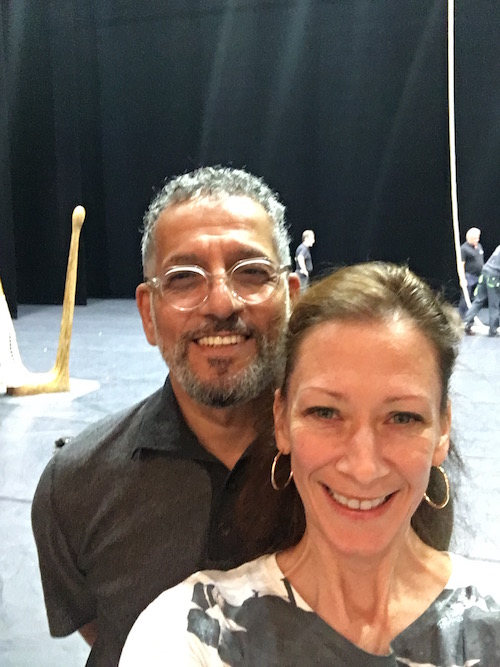
First rehearsals: I enter the studio and the air is thick with a tension that is just perfect for our introduction to one another. I want to see what the dancers have created and they are ready to show me. Due to the diligent work of Graham Company Rehearsal Director Denise Vale and Principal Dancer Ben Schultz during the initial rehearsal period months earlier, the dancers are in a strong place to continue developing Errand. Experienced and insightful Ballet Master Gamal Gouda has rehearsed the work beautifully during the time in between and what I see at first look holds the potential to ignite the archetypal forms into a transformative work of art. These dancers are in the thick of it.
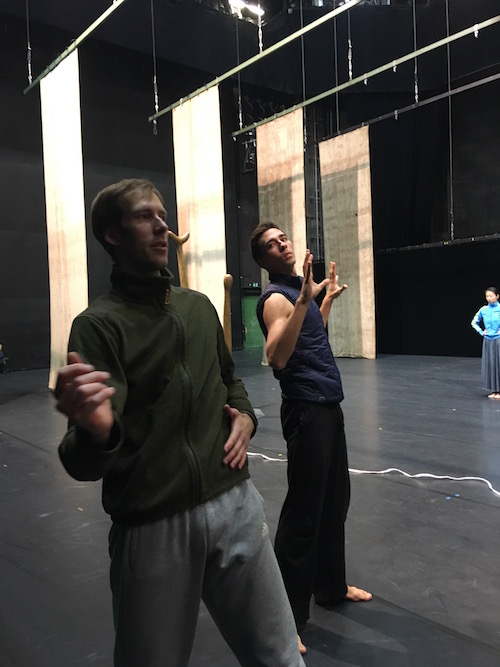
We meet for a mini-workshop on Graham technique. I review some exercises which they are familiar with and introduce a few new ones which are more advanced. These dancers from Europe, China, Japan, and Canada are already professionals in ballet and European contemporary forms. Here, however, they are dancing a classically modern work so the advanced physical ideas and philosophies of Graham technique are necessarily new knowledge which their open minds and bodies readily access. It is satisfying to watch them translate their ideas of weight placement, movement initiation and spinal awareness into the Graham idiom.
Soon enough during our technical explorations, the dancers’ breath intensifies and the heat rising from their skin becomes a physical presence in the room. In Graham technique the torso becomes like a furnace; this is the moment when I feel we are ready to begin. The first cast, Duosi Zhu and Christian Bauch run the dance, and I am made aware of the transformation happening between them. Where there was once a delicate woman, stands an adventurer setting out on a journey. She experiences the inherent fear of the unknown and completes her task. Where a gentleman stood ready to dance now holds a transformed body submitting to form and to the completion of his task as well. The drama comes not from acting but rather from performing the task with full understanding and commitment to its end.
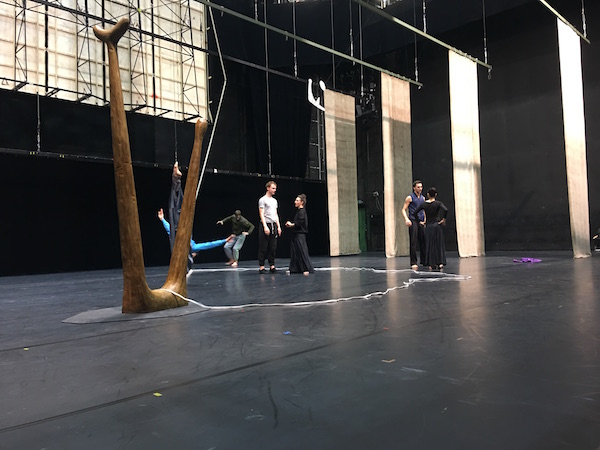
The dancers are beginning to understand the depth of submission required to perform Graham’s work. One cannot stand at a distance from the archetypes. The dancer must ignite the archetypes - go into the form and let the energy act upon them. I believe it is the same with all dance forms. In order for a powerful, memorable performance to happen — the dancer must be willing to become possessed by the energies inherent in that form. I do not imply wild possession but I do mean that the performer must go out of the mind and into the body. This is true of all great performances in the theater.
Each couple finds their way and I see immediate growth.
Jenny Laudadio and Casey Ouzounis are intensely expressive together. Ayaha Tsunaki and Gareth Haw have a restrained elegance that builds throughout the dance. There is a satisfaction in witnessing classically trained dancers open up to a way of moving previously unknown to them. They arrive at an understanding of how natural it can feel to move from the action of their breath; the contraction and release shifting a body into space. The Graham/Noguchi ecology provides the carved space, charged for the opening of imagination by both performer and audience. The Semperoper Orchestra’s live music under conductor Nathan Fifield completes the scene.
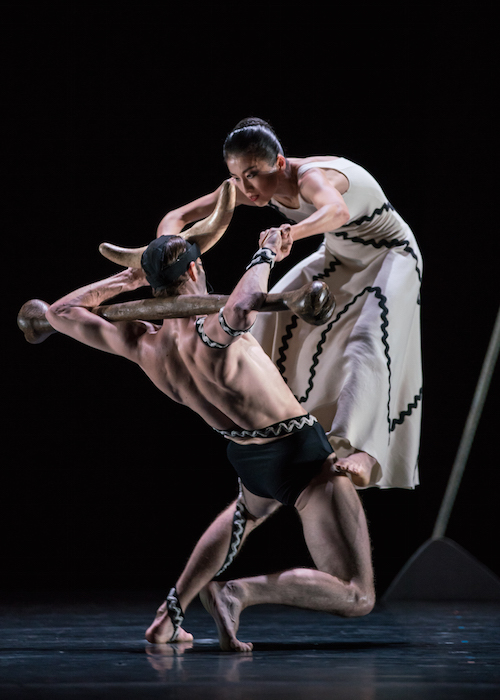
Mr. Watkin shared with me some thoughts about his programming for Labyrinth. One layer is a through line connecting the contemporaneous relationship of Graham and Balanchine as celebrated artists in their own lifetimes and in relation to that of Ohad Naharin. He is as celebrated and inventive now as the two masters were then. The lineal connection of Graham and Naharin is also present as Graham was the one who first brought Naharin to New York as a dancer in her company. The premiere by choreographer and company dancer, Joseph Hernandez closes Labyrinth. His dance is the space where artists and audience are able to stake their own claims and create/witness a new work into the unknown now.
The impact of this way of thinking and acting upon the cultural inheritance and phenomenon of dance is deep. How will we choose and best care for these works of art which are humanity’s treasures of cultural expression forged and cared for by bodies in real time over generations? What do we want to keep? Which voices/visions and dances continue to resonate through the generations; so much so that we will cross an ocean to provide personal transmission?
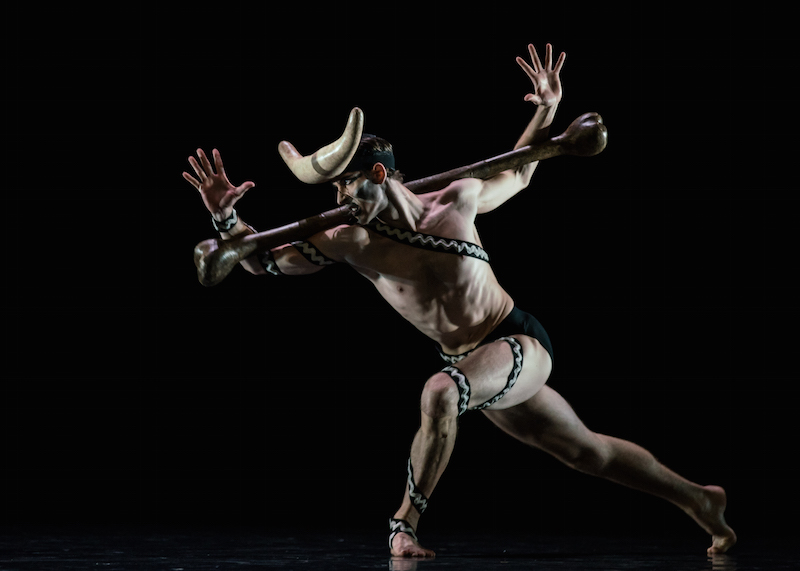
It is thrilling to transmit my own embodied knowledge of Martha Graham’s genius through lineage and to be one among the many dancers, administrators, directors, and patrons who are ardently nourishing modern dance in America. I equally admire the programming and the recognition by European directors such as Mr. Watkin and Sidi Larbi Cherkaoui (who has programmed Graham with Pina Bauch and Annabelle Lopez-Ochoa) of Graham as an iconic artist within the international canon of concert dance. I hope that more American presenters will come to see the value in our home grown lineage and present it to the American theater-going audiences in such a thoughtful and culturally-valued way as well.
In a city like Dresden, with a vitally existential understanding of what is important to care for and to keep, Semperoper is presenting a way, through dance.
Blakeley White-McGuire currently choreographs and performs for Movement Migration, dances for Buglisi Dance Theater, stages the ballets of Martha Graham internationally and teaches Contemporary dance technique at Hunter and Purchase Colleges, and the Taylor School in New York. Critically acclaimed as a principal dancer with the Martha Graham Dance Company (2002-2017), she holds an MFA in Interdisciplinary Arts from Goddard College, Vermont and enjoys writing about the 21st-century dancer experience.





